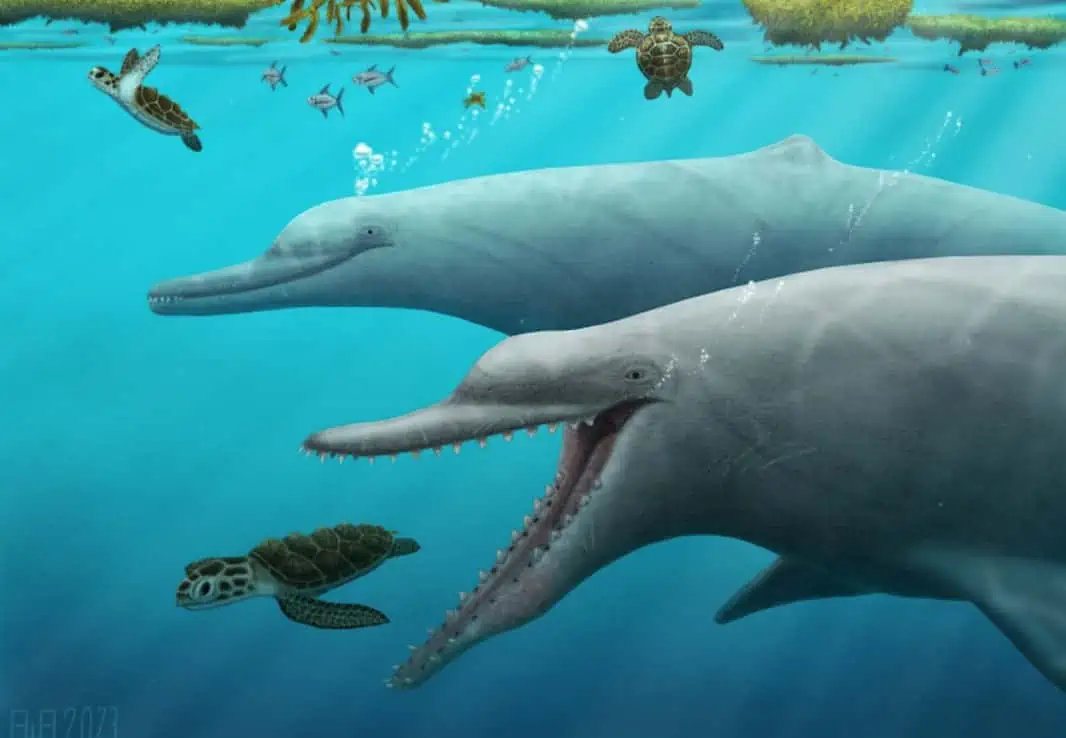A new study has shone a new light on how toothed dolphins and whales came to use echolocation as a means to navigate underwater.
While the exact mechanism of how these creatures evolved this amazing built-in sonar is not yet understood, the new research shows how this possibly happened.
The sonar works in animals with this ability due to an asymmetry in their internal structures around their blow hole. This asymmetry enables the production of sound, and with a lower jawbone filled with fat, provides directional hearing capabilities, allowing the animals to determine direction accurately.
Researchers found two ancient species of dolphins within the fossil record that lived around 25-30 million years ago. These show a step in the evolution of echolocation in these animals. The record shows that while the species may not have been as capable of producing high-pitched sounds as its modern descendants, it had reasonably well-developed listening capacities.
According to Robert Boessenecker, the study’s first author and a paleontologist and research associate at the University of California Museum of Paleontology:
“While this asymmetry is seen in other ancient whales, Xenorophus displays the strongest of any whale, dolphin, or porpoise, living or extinct. In addition, although the blowhole-focused asymmetry in today’s odontocetes can be traced back to Xenorophus and other relatives, the twisting and shifting of the snout is no longer seen today. This suggests that Xenorophus is a crucial puzzle piece in understanding how whales and dolphins evolved their echolocation abilities.”
While Jonathan Geisler, study co-author and professor and chair of anatomy at the New York Institute of Technology added:
“Biological symmetry, or the mirror-imaging of body parts across anatomical planes, is a major feature in the evolutionary history of animals and humans. However, our research shows the important role of asymmetry in adapting to different environments, and that asymmetry should be closely investigated in fossils, instead of being dismissed as individual variation or assumed to be caused by geological distortion.”
You can find the original research here.

